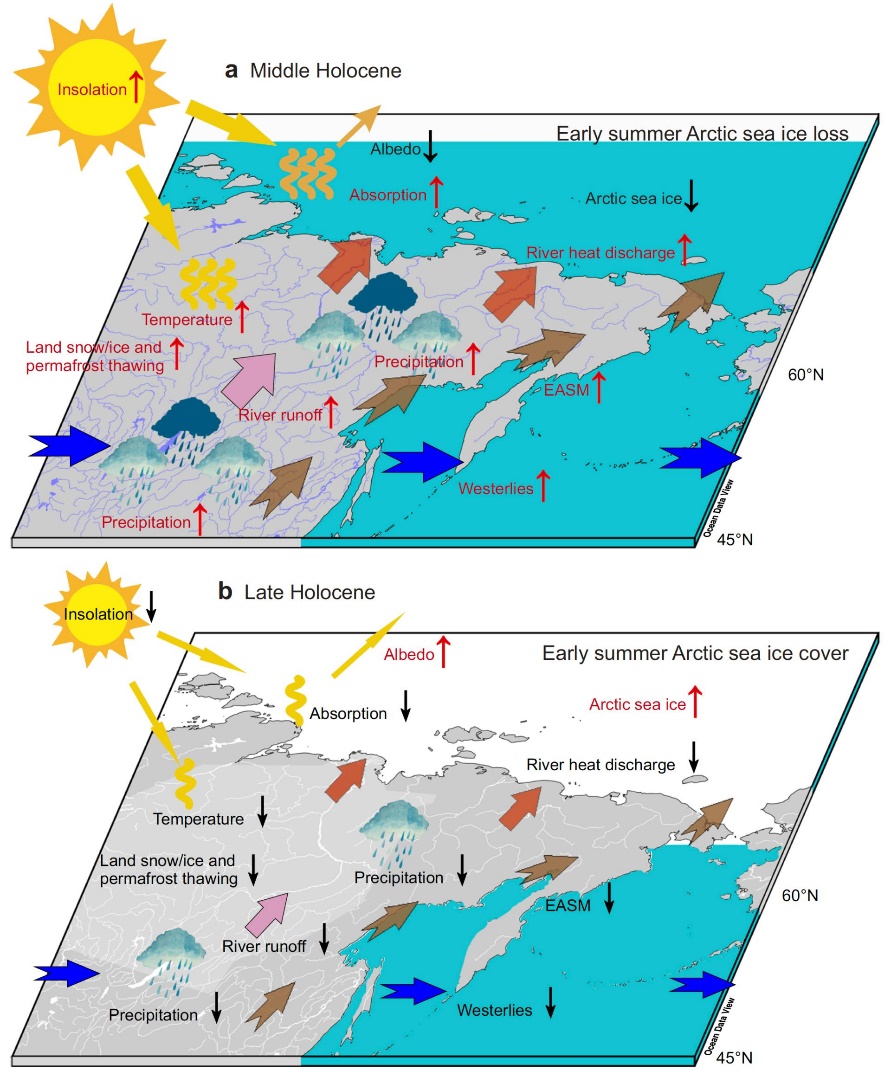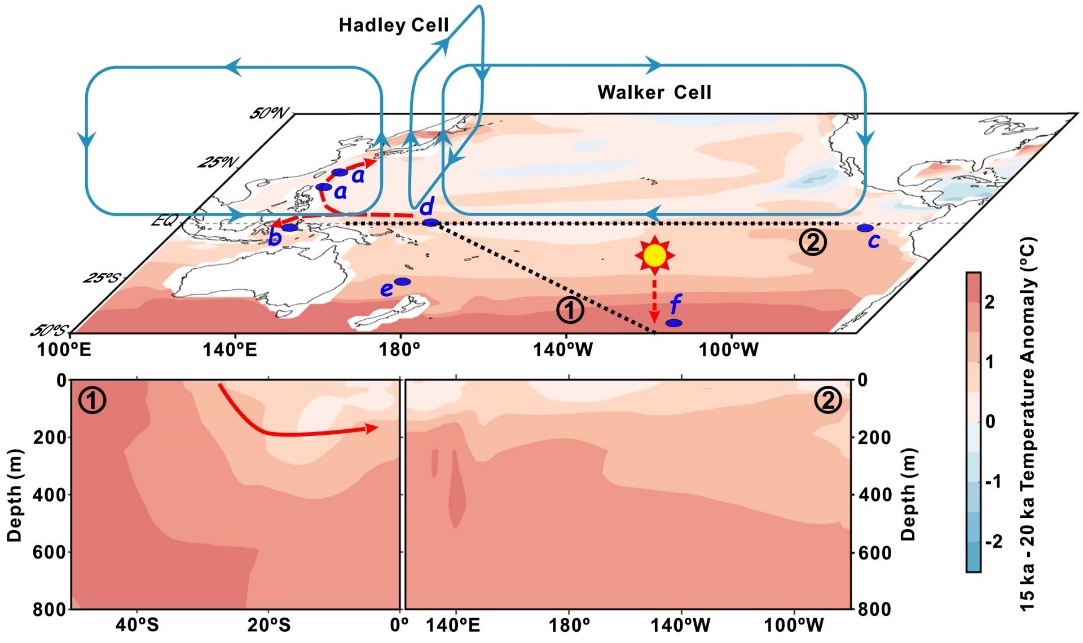Recently, Prof. Dr. Xun Gong’s group in China University of Geosciences (Wuhan) published two papers in the current issue of Nature Communications. The papers provide new understanding about ocean processes in tropical and polar regions on the basis of warming climate, with scopes of paleoclimate and paleoceanography.

Fig. Mechanisms of Russian pan-Arctic river heat discharges affecting Arctic sea ice.
In the paper ‘Enhanced Arctic sea ice melting controlled by larger heat discharge of mid-Holocene rivers’, Xun and collaborators developed a chronostratigraphic framework based on the sedimentary cores of the East Siberian shelf, and analyzed depositional environment based on radiocarbon and quartz dating techniques, to reconstruct East Siberian sea ice since the Mid Holocene, also involving ice raft debris and compared with modern warming processes in this region. In the results, changes in the East Siberian sea ice due to varying thermal discharge via Russian pan-Arctic rivers are discussed for the past 7, 500 years. From a view of ancient climate, this work provided clues for the modern warming climate that the pan-Arctic runoff heat flux will play roles in significantly melting the Arctic sea ice in the context of modern and future global warming. [see link: https://doi.org/10.1038/s41467-022-33106-1]

Fig. Hypothesized spatial heat transfer process in the Pacific during the last deglaciation.
In the paper ‘Thermal coupling of the Indo-Pacific warm pool and the Southern Ocean over the past 30,000 years’, Xun and collaborators discussed the evolution of horizontal and vertical thermal gradients in the western equatorial Pacific Ocean over the past 30,000 years, by compiling 340 sea surface temperature records, 7 subsurface ocean temperature records and a new ocean heat content record. It is found that the warming in the western Pacific warm pool is more intense, in association with a La Niña-like phenomena, during the deglacial period. In parallel, the subsurface temperature and oceanic heat content in the warm pool started a rise earlier than in the surface ocean on orbital scales, linked to changes of subsurface temperatures in the South Pacific Ocean. This suggest that the heat exchange between the tropical upper water column and mid-latitude Southern Ocean accelerated the warming in the western equatorial Pacific Ocean. The findings developed the understanding about thermal coupling process between equatorial and mid-latitude southern Pacific Ocean in warming climate. [see link:https://doi.org/10.1038/s41467-022-33206-y]
Prof. Gong Xun works as a deputy Dean of College of Marine Science and Technology in CUG-Wuhan, and a research fellow in Team ‘Marine Ecology and Health’ in the State Key Laboratory of Biogeology and Environmental Geology. The two papers are published in collaboration with the First Institute of Oceanography and Hohai University, China, Alfred-Wegener-Institut Helmholtz-Zentrum für Polar- und Meeresforschung, Germany and Far Eastern Branch of Russian Academy of Sciences, Russian.
Correspondent: Yin Yin, Yunhua Qiao